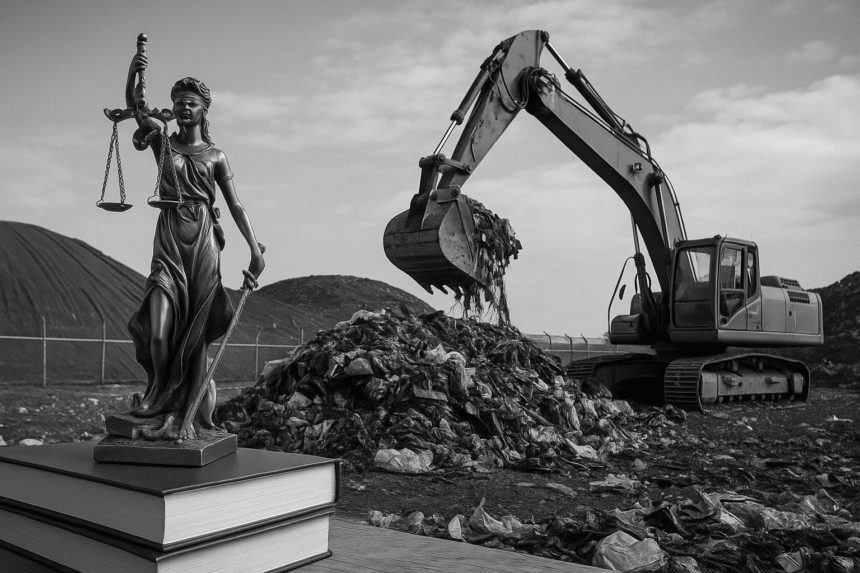Creating Legal Infrastructure for Waste Management PPPs
As cities and governments seek sustainable solutions for waste disposal, public-private partnerships (PPPs) have become a strategic choice—especially for large-scale waste treatment, landfill, and recycling projects. But for these partnerships to succeed, they need more than engineering and equipment. They need clear, enforceable legal frameworks.
This post explores the key components of creating legal infrastructure for waste management PPPs, focusing on compliance, contracts, liability, and long-term operational success. Whether you’re advising a private contractor, a government agency, or an investor, these are the foundations you can’t afford to overlook.
Why Legal Infrastructure Matters in Waste Management PPPs
Waste management projects carry high environmental, operational, and reputational risks. Without a strong legal setup:
- Governments face public backlash and regulatory fines
- Contractors absorb excessive risk or deliver under unclear terms
- Investors shy away from long-term commitments
A well-structured PPP contract ensures clarity on roles, obligations, risk-sharing, and compliance.
Environmental Compliance and EIA Obligations
One of the first steps in any waste PPP is meeting environmental standards, both nationally and locally. That typically means completing an Environmental Impact Assessment (EIA) before project approval.
Legal Requirements Include:
- Conducting a formal EIA: Often mandatory before construction begins
- Obtaining environmental permits: Including site development, emissions, and leachate discharge
- Complying with national waste laws: Such as Egypt’s Law No. 202 (2020) or the EU Waste Framework Directive
- Stakeholder engagement: Public hearings and feedback for transparency
These obligations must be clearly reflected in the contract and included as conditions precedent to construction or operation.
DBOT Contracts: The Legal Core of Waste PPPs
Most waste infrastructure PPPs use a Design, Build, Operate, Transfer (DBOT) model. The DBOT contract is the legal blueprint for how the project will be built and run.
Key Clauses to Include:
- Scope of Work:
- Construction of landfill or treatment cells
- Operation of leachate systems, monitoring tools, and access roads
- Duration and Phases:
- Construction period (e.g., 1 year)
- Operation period (e.g., 10–20 years)
- Handover process to the public authority
- Technical Standards:
- Reference to engineering codes, EIA conditions, and monitoring benchmarks
- Change Orders:
- Procedure for handling site changes, new regulations, or community concerns
- Revenue Structure:
- Gate fees, tipping charges, or availability payments
The DBOT contract becomes the reference document for legal enforcement throughout the project lifecycle.
Risk Allocation and Operations Handover
Risk sharing is one of the most critical legal elements in PPP contracts. Poorly allocated risk can make or break a project.
Common Risk Categories:
- Construction Risk: Usually borne by the contractor
- Environmental Risk: Shared; contractor ensures containment and compliance
- Revenue Risk: Depends on whether the model is user-pays or government-backed
- Political and Legal Risk: Often mitigated via stabilization clauses
At the end of the project, handover obligations must be clear:
- Asset condition reports
- Removal of temporary structures
- Transfer of operating manuals and licenses
A clear risk and handover framework reduces end-of-contract disputes.
Monitoring, Reporting, and Compliance Requirements
Sustainable waste management requires ongoing monitoring—not just during construction, but throughout operations.
Contractual Monitoring Clauses Should Cover:
- Environmental reporting frequency (monthly, quarterly)
- Use of monitoring systems (e.g., geo-electrical systems for leakage)
- Third-party audits: Government or independent checks
- Incident reporting: Timeline and format for notifying spills, fires, or compliance breaches
Failure to meet monitoring standards should trigger penalties or remedial plans outlined in the contract.
Contractor Liability and Insurance Protections
To protect both public and private parties, contractor liabilities and insurance terms must be precise.
Legal Clauses Should Address:
- Defects liability period after construction
- Third-party injury or environmental damage
- Contractor indemnity for negligent operations
- Insurance coverage, including:
- General liability
- Environmental damage
- Construction All Risks (CAR)
Many governments require that insurance policies name them as co-insured to protect public interests.
Conclusion
Successful waste PPPs rely not only on infrastructure but on a solid legal foundation. From DBOT contracts and EIA obligations to risk allocation and insurance, creating a clear legal infrastructure for waste management PPPs helps all parties deliver safely, sustainably, and profitably.
For legal advisors, engineers, or government officials, these contracts are not just technical—they are the safeguards of long-term public service. Draft them wisely, review them often, and always align them with evolving environmental and regulatory frameworks.



Leave a Reply